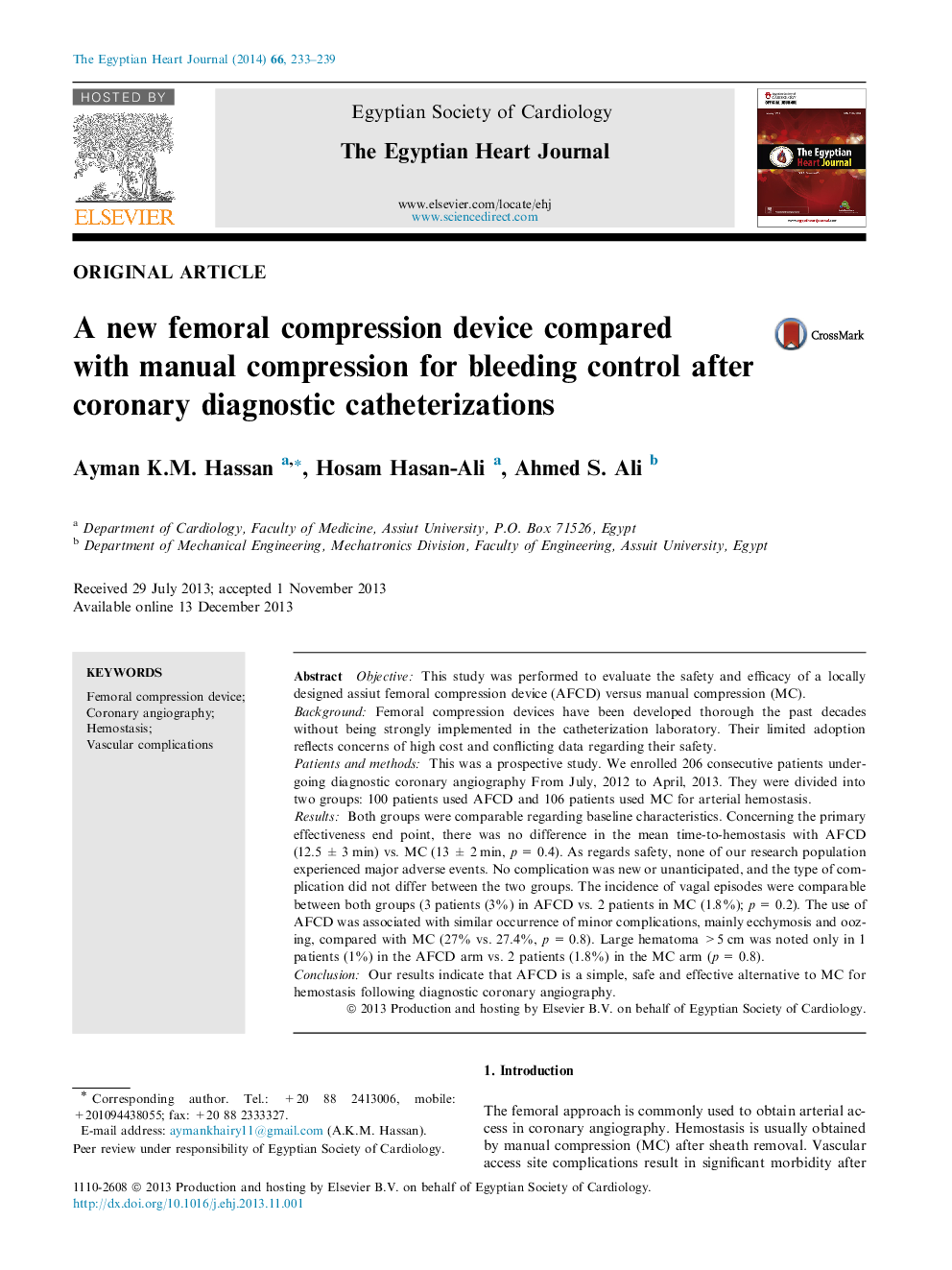| Article ID | Journal | Published Year | Pages | File Type |
|---|---|---|---|---|
| 2910616 | The Egyptian Heart Journal | 2014 | 7 Pages |
ObjectiveThis study was performed to evaluate the safety and efficacy of a locally designed assiut femoral compression device (AFCD) versus manual compression (MC).BackgroundFemoral compression devices have been developed thorough the past decades without being strongly implemented in the catheterization laboratory. Their limited adoption reflects concerns of high cost and conflicting data regarding their safety.Patients and methodsThis was a prospective study. We enrolled 206 consecutive patients undergoing diagnostic coronary angiography From July, 2012 to April, 2013. They were divided into two groups: 100 patients used AFCD and 106 patients used MC for arterial hemostasis.ResultsBoth groups were comparable regarding baseline characteristics. Concerning the primary effectiveness end point, there was no difference in the mean time-to-hemostasis with AFCD (12.5 ± 3 min) vs. MC (13 ± 2 min, p = 0.4). As regards safety, none of our research population experienced major adverse events. No complication was new or unanticipated, and the type of complication did not differ between the two groups. The incidence of vagal episodes were comparable between both groups (3 patients (3%) in AFCD vs. 2 patients in MC (1.8%); p = 0.2). The use of AFCD was associated with similar occurrence of minor complications, mainly ecchymosis and oozing, compared with MC (27% vs. 27.4%, p = 0.8). Large hematoma >5 cm was noted only in 1 patients (1%) in the AFCD arm vs. 2 patients (1.8%) in the MC arm (p = 0.8).ConclusionOur results indicate that AFCD is a simple, safe and effective alternative to MC for hemostasis following diagnostic coronary angiography.
